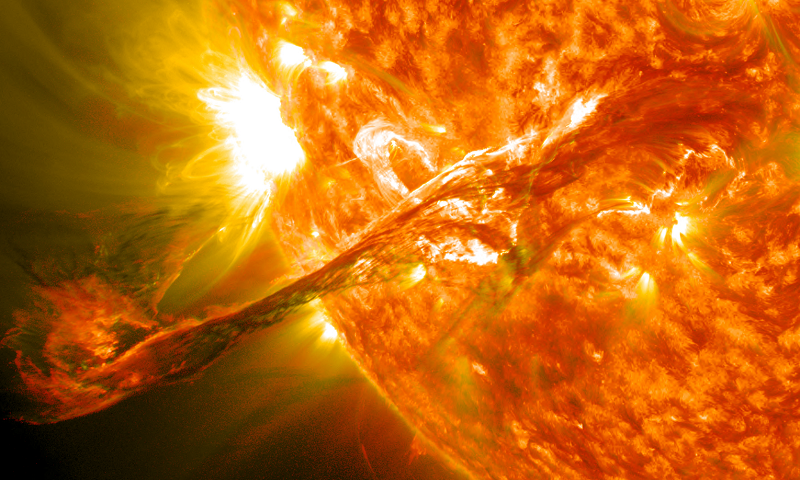
Traveling towards the Earth at roughly 1,120,000 mph, a solar wind launched towards the planet from the Sun is due to strike the Earth. The Earth’s magnetic field will deflect most of the energy from the high-speed stream, perhaps triggering a brilliant display of the aurora at northern latitudes. While there could be radio communication, satellite, and GPS issues, a significant geomagnetic storm is not expected with this solar blast.
Scientists with the National Weather Service’s Space Weather Prediction Center are monitoring this unfolding space weather event. While typically known for their weather forecasts, the National Oceanic and Atmospheric Administration (NOAA) and its National Weather Service (NWS) is also responsible for “space weather.” While there are private companies and other agencies that monitor and forecast space weather, the official source for alerts and warnings of the space environment is the Space Weather Prediction Center (SWPC). The SWPC is located in Boulder, Colorado and is a service center of the NWS, which is part of NOAA. The Space Weather Prediction Center is also one of nine National Centers for Environmental Prediction (NCEP) as they monitor current space weather activity 24/7, 365 days a year.
This week’s forecast event is one of many solar events that have recently impacted Earth. A July 3 flare erupted at 10:29am ET, classified as an X1 class flare which is the largest on the scale used to measure such events. Fortunately, that event, which unleashed the equivalent energy of millions of 100-megaton hydrogen bombs, was aimed away from the Earth and only created minor electrical and radio communication issues around the globe. A strong solar flare disrupted radio communications on May 22. A geomagnetic storm impacted Earth on May 18 and 19, triggering stunning aurora over northern latitudes. That event was caused by a coronal hole on May 14. On May 12, one of the strongest geomagnetic storms to impact Earth in a while hit, forcing the Space Weather Prediction Center to issue a G3 – Strong- Geomagnetic Storm Warning. On May 2, a solar wind traveling at 1,118,468 mph struck Earth.
Experts have indicated that we are entering an active solar cycle now and incidents like this will increase with frequency and intensity in the coming months.
